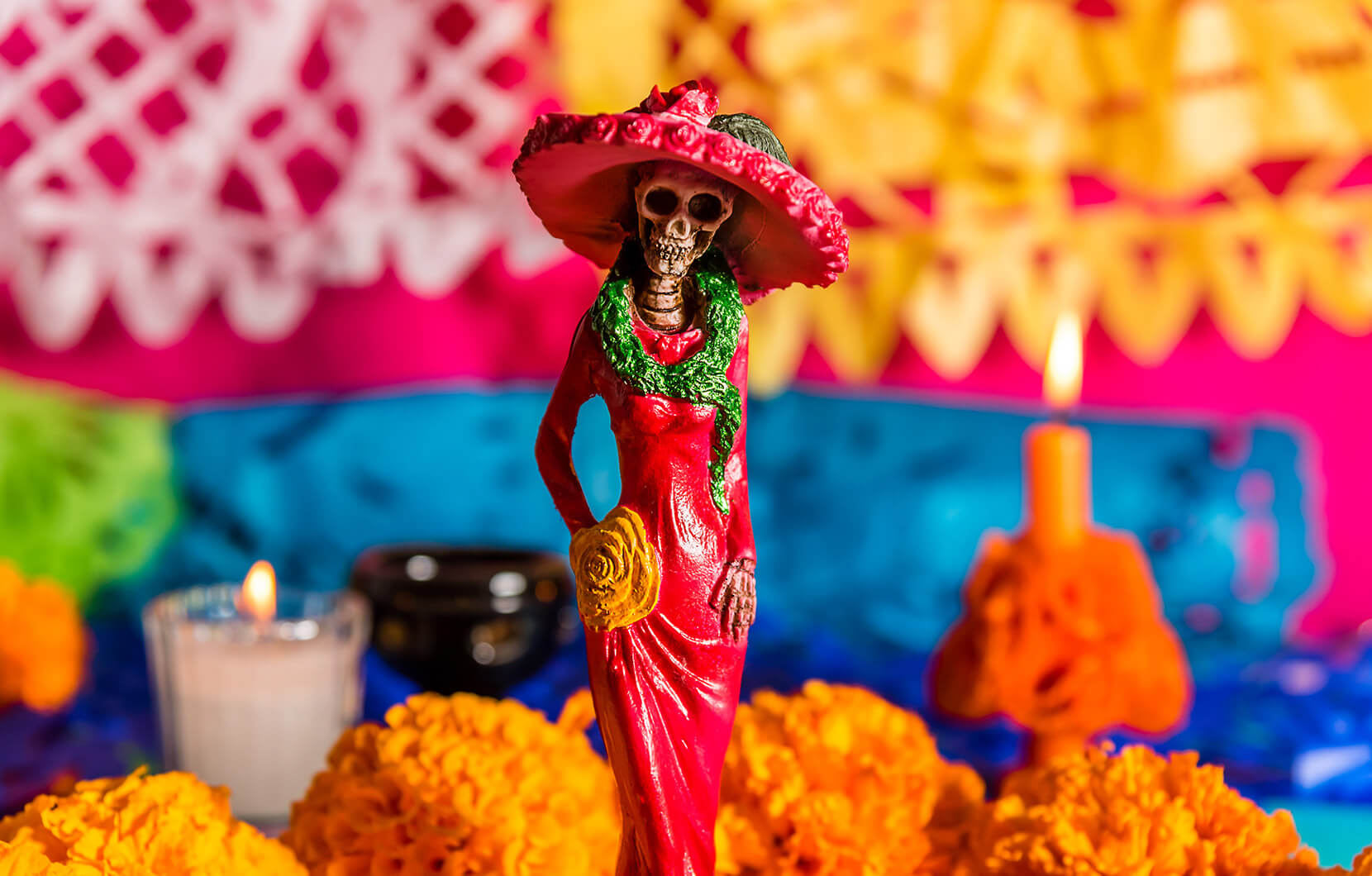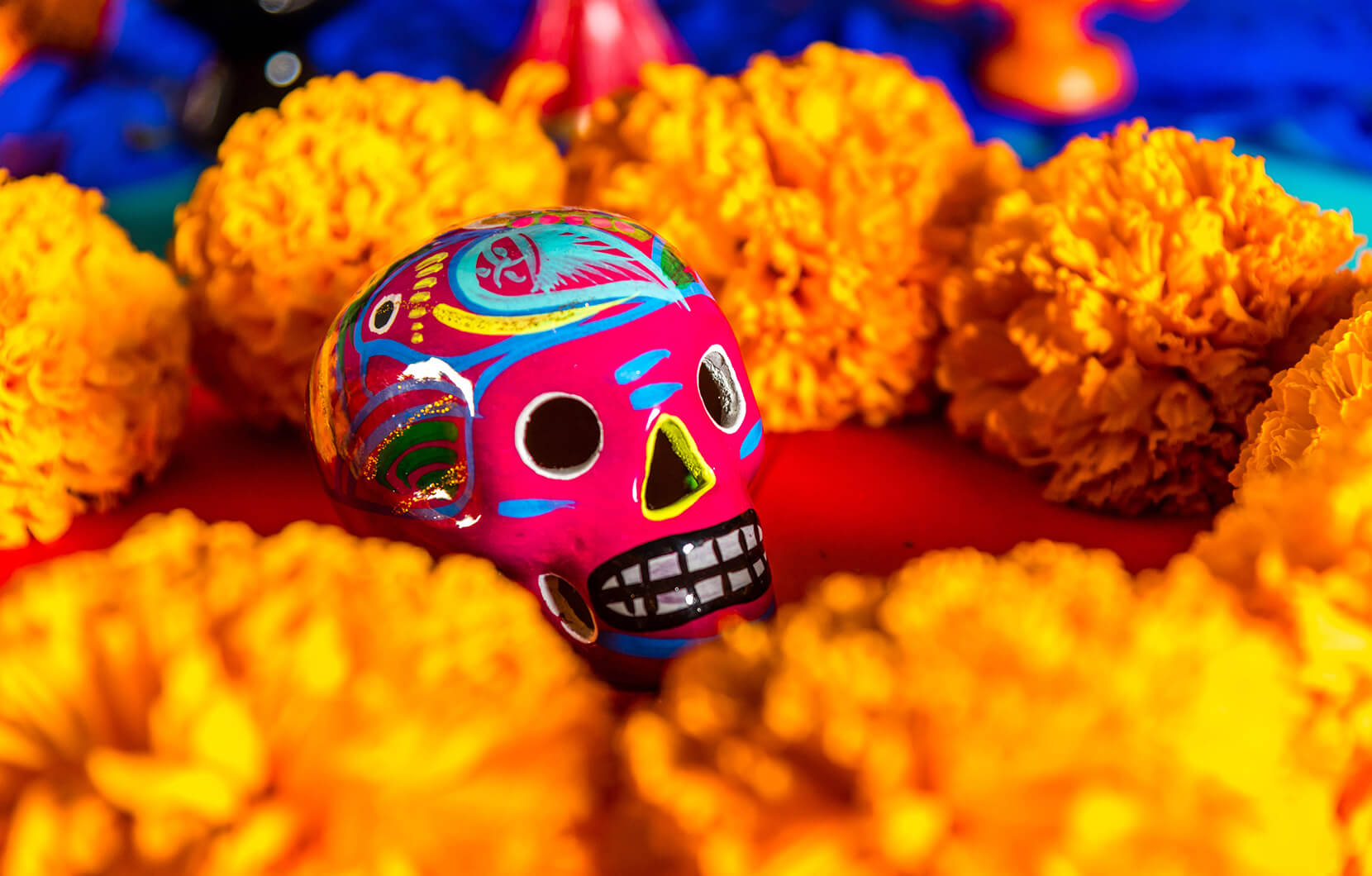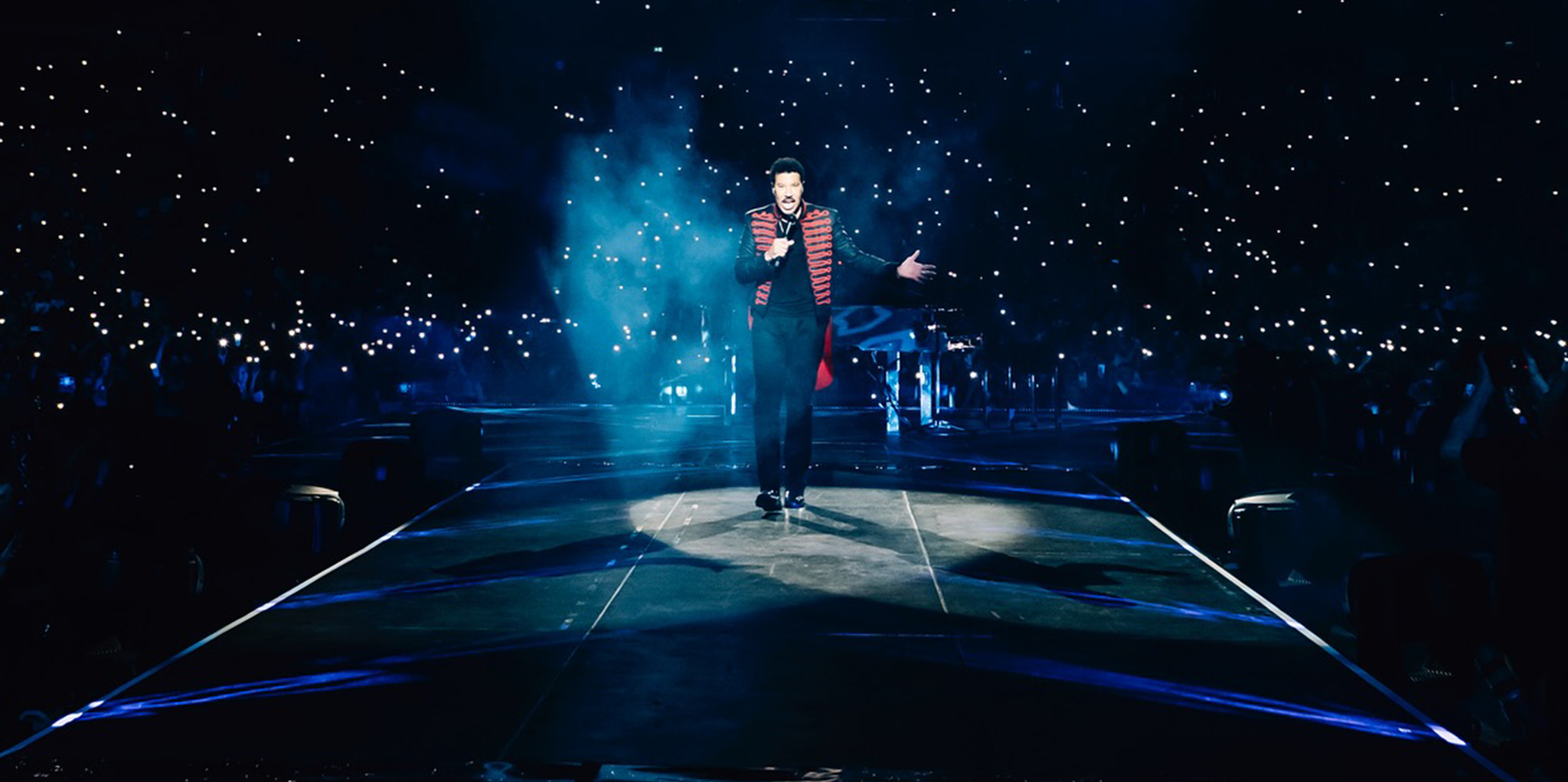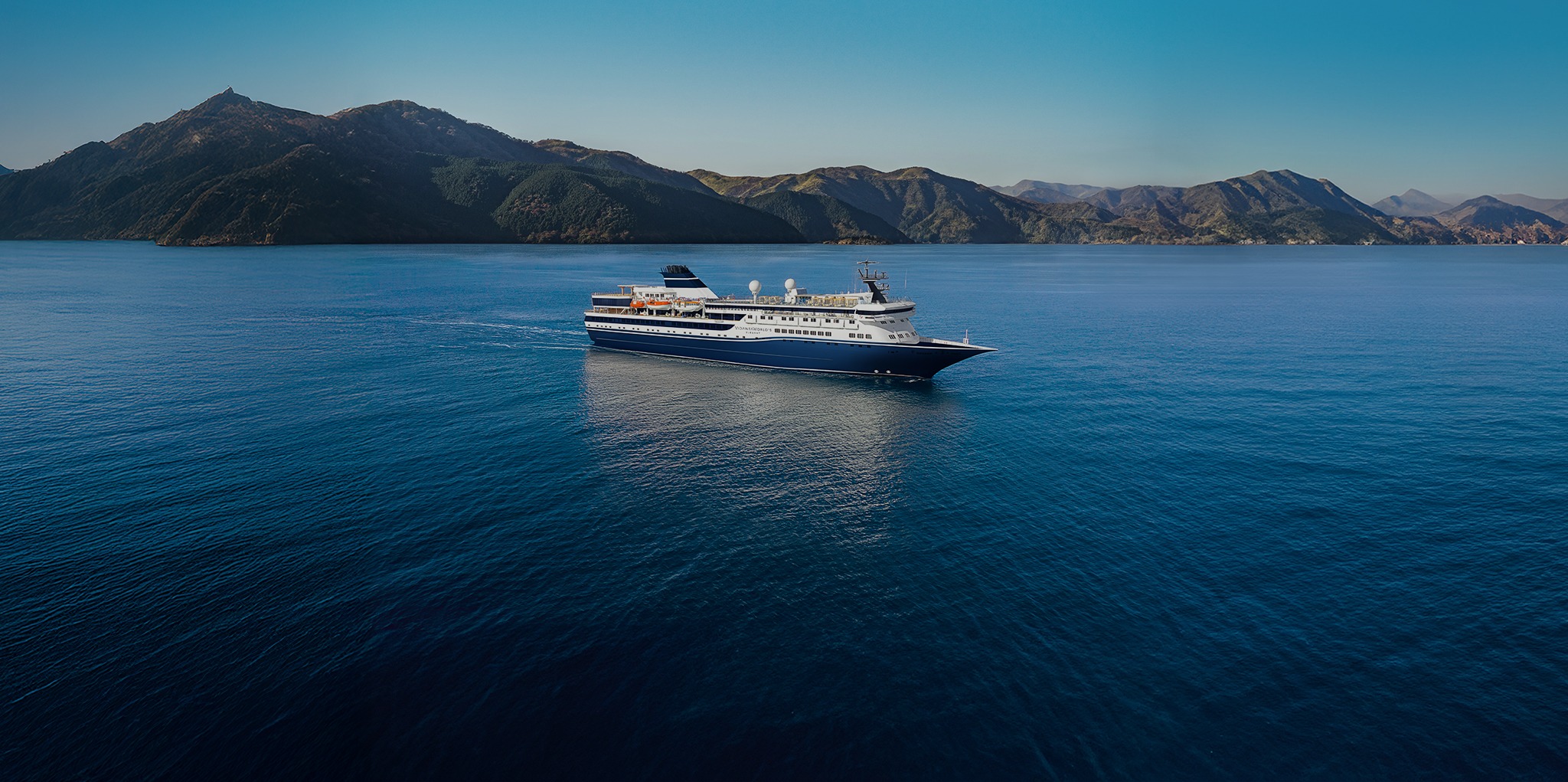
A Catrina figurine at an ofrendas, surrounded by marigolds.
Today, in Mexico and in pockets throughout Latin American, families continue to honor the lives of their loved ones. They erect celebratory ofrendas, or altars, awash with vivid Mexican marigolds and abundant with food and drink to nourish weary spirits. They toast tequila and mezcal; they visit and clean gravesites. In 2008, UNESCO added Día de Muertos to its Representative List of Intangible Cultural Heritage, an ongoing project to archive and protect cultural diversity.

A decorative painted calavera amongst the marigolds.
The calavera or skull, along with the calaca (mask, or skeleton), is a classic symbol of the holiday, often portrayed in fancy dress and festive situations to merrily depict life. Families gift cookies—sugar skulls—to the living as well as the dead, because while its name refers to those who’ve passed, Día de Muertos is a celebration of life, itself symbolic of cultural survival.

A laughing skeleton showcases how the holiday is a celebration of life.
Another iconic image of the holiday is La Catrina, the coyly grinning skeleton dressed to the nines and festooned with flowers or plumes. Chances are you’ve seen figurines of La Catrina in markets or even shops at the Vidanta resorts. But did you know it was the printmaker José Guadalupe Posada who first employed her image as a tongue-in-cheek representation of poor native Mexicans who emulated rich Europeans with their fashion and style? Beloved artist Diego Rivera later adopted the character in his murals and gave her the name “Catrina”. The more he and other artists started to replicate this figure, the more she became a reflection of Mexico’s irreverent approach to death where the dead are not to feared or forgotten, but rather kept close and celebrated.
If you’re spending this holiday on the resorts, you can experience a range of special activities and celebrations, including a Día de Muertos-themed Lake Show at Nuevo Vallarta! For more information or reservations, contact your concierge.






